DMM Sanwa PM3
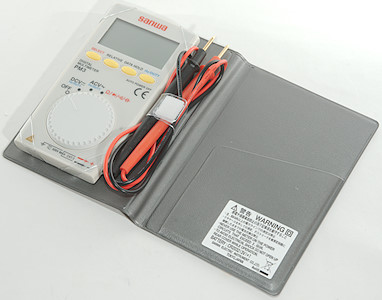
This is a small pocket DMM with voltage, ohms and capacity, but without current.
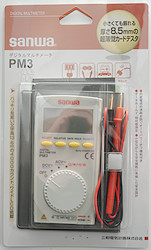
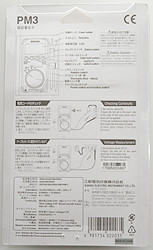
The meter was in a clamshell pack. On the back is a some explanation about using the meter.
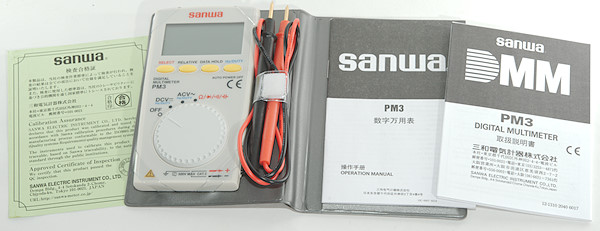
In the pack was the meter and a manual in English.
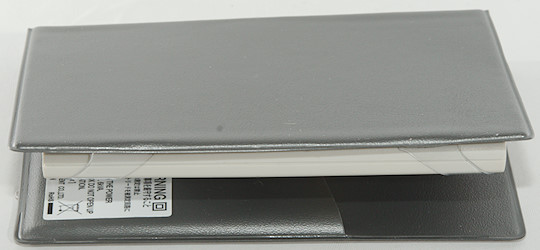
The probes and wires need some pressure to close the cover.

The probes are small and without any markings.
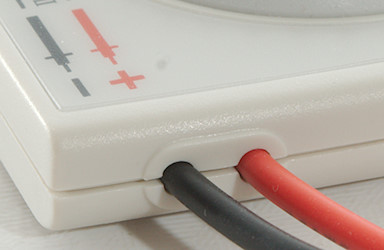
The probes are directly connected to the meter, no plugs and sockets.
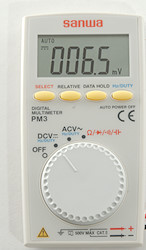
The range switch is easy to turn, there is not many selections, Sanwa has decided to use a buttons for many measurements
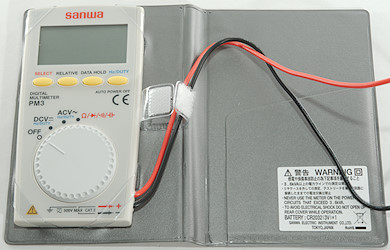
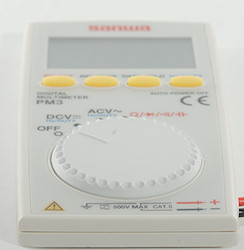


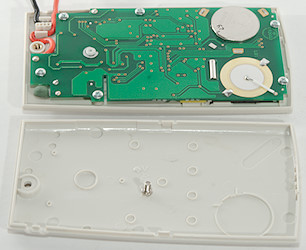
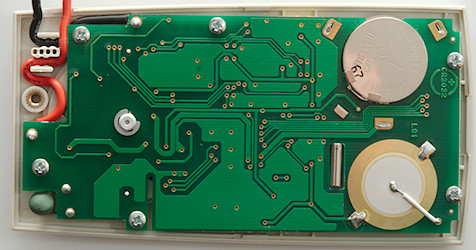
Display
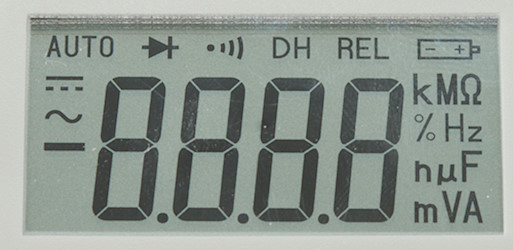
The above picture shows all the segments on the display.
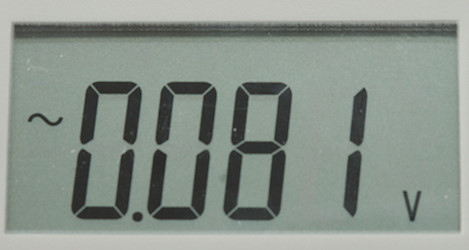
Typical display during usage, it will show the selected range and value.
Functions
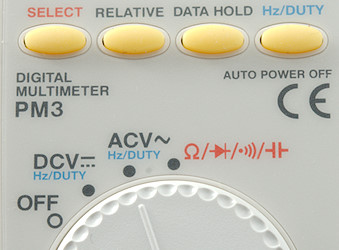
Buttons:
-
Select: Select between ohm, diode, continuity and capacitance
-
Relative: Store current display value and show all new values relative to this value.
-
Hold: Will freeze the display reading, until pressed again.
-
Hz/duty: Will select between voltage, frequency and duty cycle in both DC and AC.
Selection of Relative and Hz/duty will disable auto ranging and it stays disabled
The Select and Hz could have been combined, they are not used in the same ranges.
Rotary switch:
-
Off: Meter is turned off
-
VDC: DC voltage and frequency/duty cycle.
-
VAC: AC voltage and frequency/duty cycle.
-
 : Ohm, diode continuity and capacitance.
: Ohm, diode continuity and capacitance.
Input

This meter only have a red and black probe comming out, no other connections.
Measurements
-
Volt and frequency
-
At 1V rms input on DCV/ACV the frequency counter range is from 0.5Hz to 8kHz
-
At 2V rms input on DCV/ACV the frequency counter range is up to 15kHz
-
At 5V rms input on DCV/ACV the frequency counter range is up to 21kHz
-
Duty cycle works from 5% to 96% at 1kHz with 4Vpp, precision is within 0.8 (Mostly 0.3)
-
Both DC and AC frequency counter inputs need a zero crossing.
-
1V AC readings is 5% down at 2kHz
-
V input impedance is 10-11Mohm,
-
mV input impedance is high below 1.5V and drops to 10MOhm above.
-
Frequency on DC is high impedance below 1.5V and drops to 10Mohm above.
-
Input protection is 500V AC/DC.
-
-
Current
-
There is no current ranges
-
-
Ohm, continuity, diode and capacity
-
Ohm needs about 3.5s to measure 100ohm
-
Ohm is 0.43V open and 0.16mA shorted
-
Continuity is very fast (<5ms)
-
Continuity beeps when resistance is below 20ohm and makes noises up to about 50ohm
-
Continuity is 0.44V open and 0.16mA shorted
-
Diode range uses 1.5V, max. display is 0.999V at 0.1mA (Real voltage is 1.1V), max. current is 0.44mA shorted
-
200uF takes about 43 seconds to measure.
-
Rated overload protection is 500 VDC/VAC
-
-
Miscellaneous
-
Current consumption of meter is 1.6mA except in AC where it is 2.2mA
-
Meter starts to fade at 2V and fails below 1.6V, battery symbol shows at 2.3V.
-
Readings will drift about 8 count from when battery symbols shows to the meter fails.
-
Viewing angle is good
-
Display updates around 3 times/sec
-
Will automatic turn power off after about 15 minutes
-
The meter often need many display update to reach the final value.
-
Weight is 91g without accessories, but with sleeve and batteries.
-
Size is 108 x 5 x 12mm (probes not included) and 120 x 79 x 16 in sleeve.
-
-
Probes
-
Probe wire is a bit thin, the are 41cm long.
-

Capacity measurement waveform.
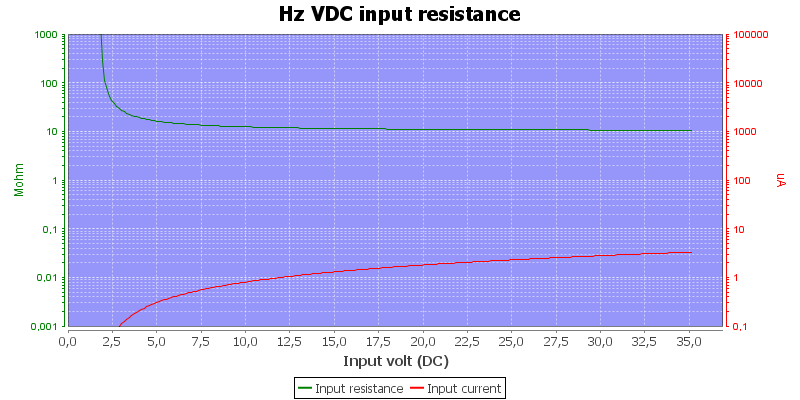
Frequency input resistance in voltage DC position, mVDC is similar.
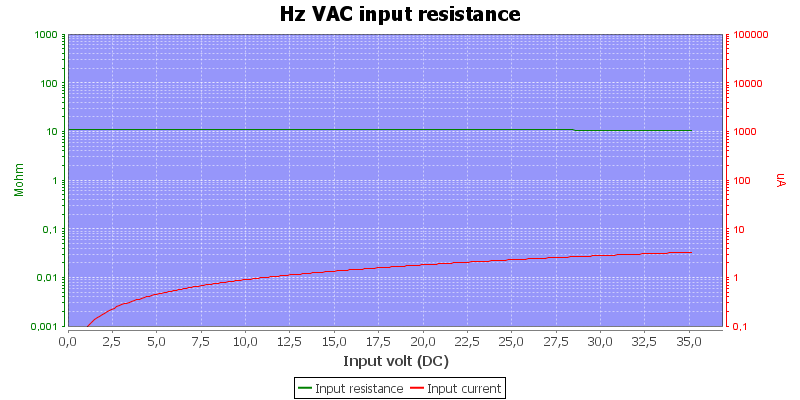
Frequency input resistance in voltage AC position.

The meter cannot measure low AC volt when there is a large DC voltage.
Tear down

I had to remove one screws, to open it, this is also required when replacing battery.

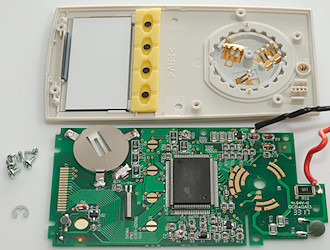
To get the circuit board out I had to remove 6 screws and a locking ring.
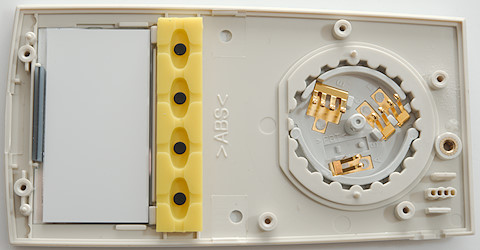
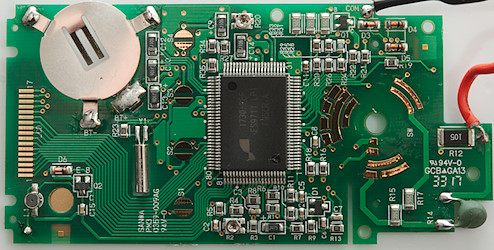
The multimeter chip (FS9711_LP1 (See FS9721_LP1 datasheet)) is the most obvious feature on the circuit board. The circuit around D1 and R2 is rectifier for AC voltage. The range selection resistors are near the range switch (Most of R21..R30) and is selected by the chip. The input resistor is 5 resistors (R15, R17 & R31, R32, R33: 5x2Mohm) placed at two locations. The input is also going through a PTC (R14) and protection transistor (Q1), this is for ohm ranges, in ohm there is also a need for another input path (R12 1Mohm).
The buzzer has a transistor and inductor to get as much sound as possible (It is not very loud).
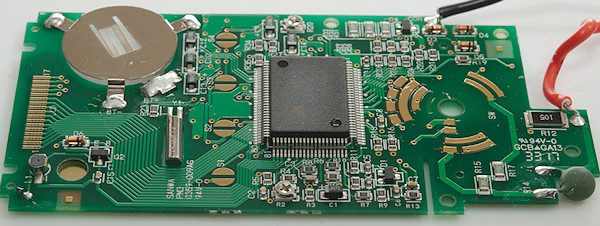
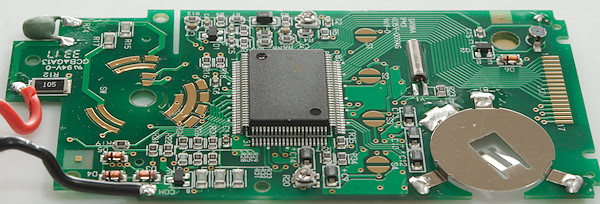
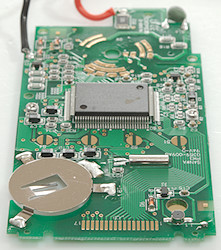
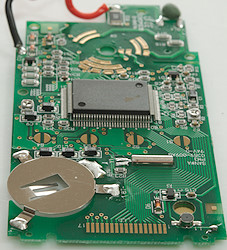
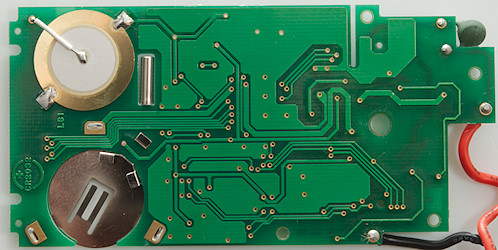
On this side is only the buzzer and access to the battery, there is cut-outs for the crystal and the PTC.

Conclusion
The meter says CAT II 500V, but this rating is either 300V or 600V, there is no 500V. The safety looks acceptable for 300V.
The meter does not have current ranges, this improves the safety, but limits the abilities of the meter. The meter has some limits in its range, but for a pocket meter is it fairly decent.
Notes
How do I review a DMM
More DMM reviews